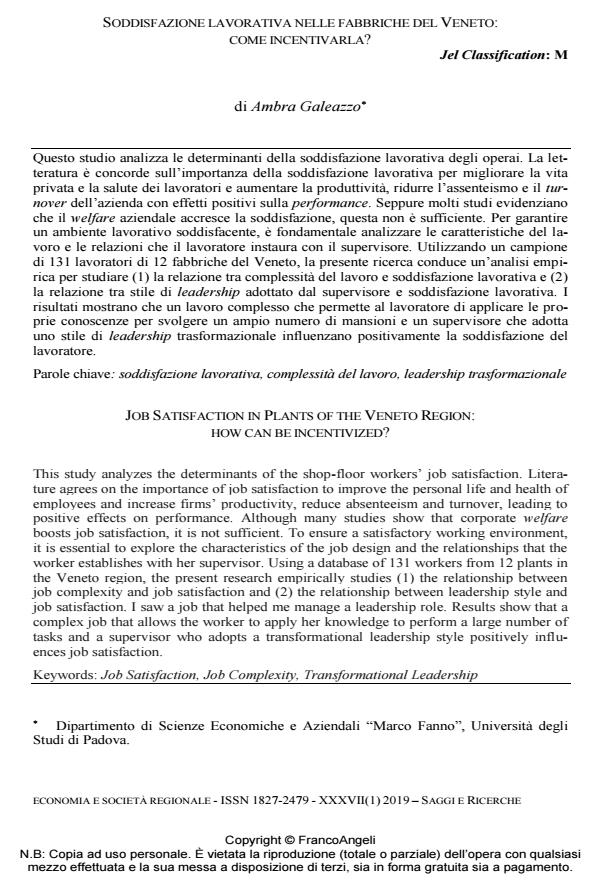Job satisfaction in plants of the Veneto region: how can be incentivized?
Journal title ECONOMIA E SOCIETÀ REGIONALE
Author/s Ambra Galeazzo
Publishing Year 2019 Issue 2019/1
Language Italian Pages 24 P. 141-164 File size 371 KB
DOI 10.3280/ES2019-001010
DOI is like a bar code for intellectual property: to have more infomation
click here
Below, you can see the article first page
If you want to buy this article in PDF format, you can do it, following the instructions to buy download credits

FrancoAngeli is member of Publishers International Linking Association, Inc (PILA), a not-for-profit association which run the CrossRef service enabling links to and from online scholarly content.
This study analyzes the determinants of the shop-floor workers’ job satisfaction. Literature agrees on the importance of job satisfaction to improve the personal life and health of employees and increase firms’ productivity, reduce absenteeism and turnover, leading to positive effects on performance. Although many studies show that corporate welfare boosts job satisfaction, it is not sufficient. To ensure a satisfactory working environment, it is essential to explore the characteristics of the job design and the relationships that the worker establishes with her supervisor. Using a database of 131 workers from 12 plants in the Veneto region, the present research empirically studies (1) the relationship between job complexity and job satisfaction and (2) the relationship between leadership style and job satisfaction. I saw a job that helped me manage a leadership role. Results show that a complex job that allows the worker to apply her knowledge to perform a large number of tasks and a supervisor who adopts a transformational leadership style positively influences job satisfaction.
Keywords: Job Satisfaction, Job Complexity, Transformational Leadership
Jel codes: M
Ambra Galeazzo, Soddisfazione lavorativa nelle fabbriche del Veneto: come incentivarla? in "ECONOMIA E SOCIETÀ REGIONALE " 1/2019, pp 141-164, DOI: 10.3280/ES2019-001010